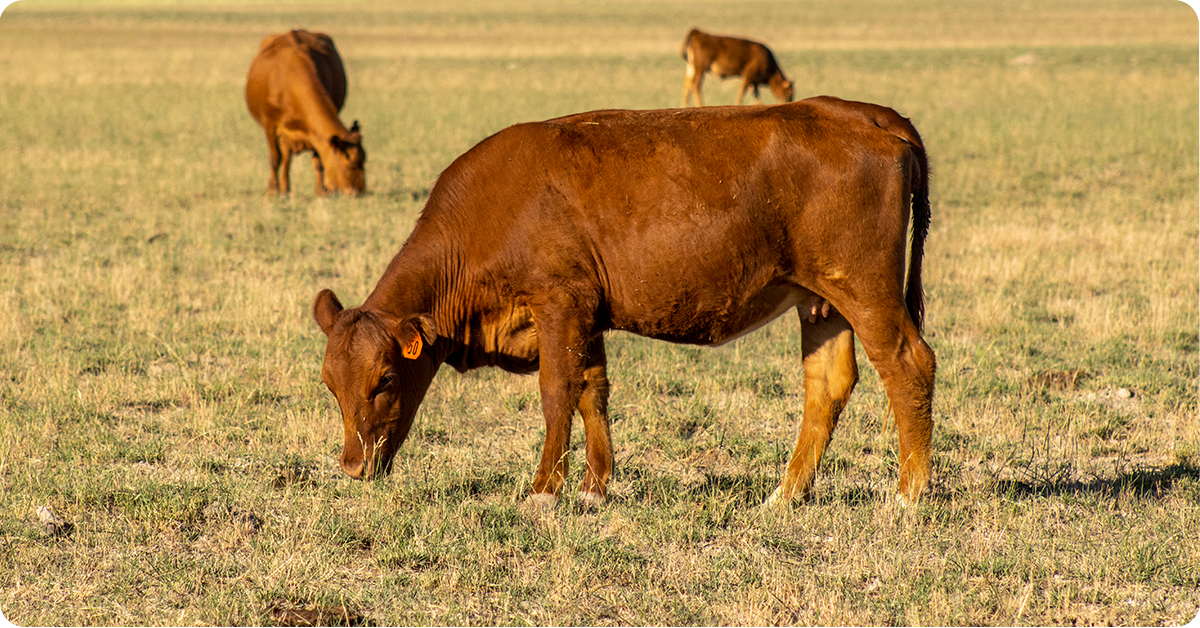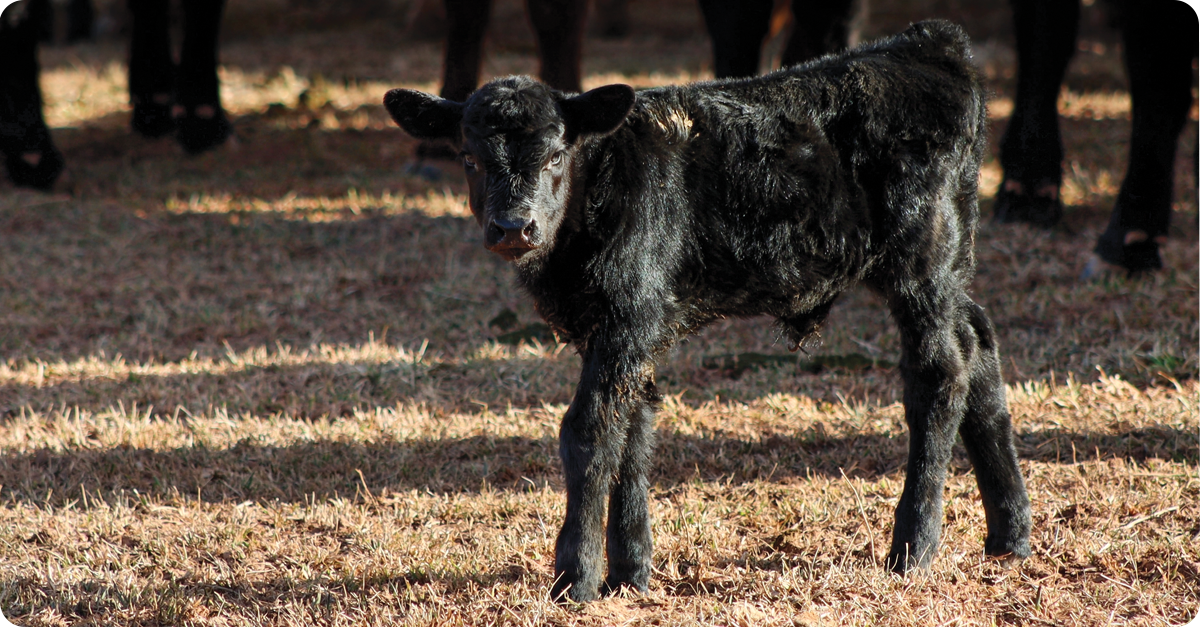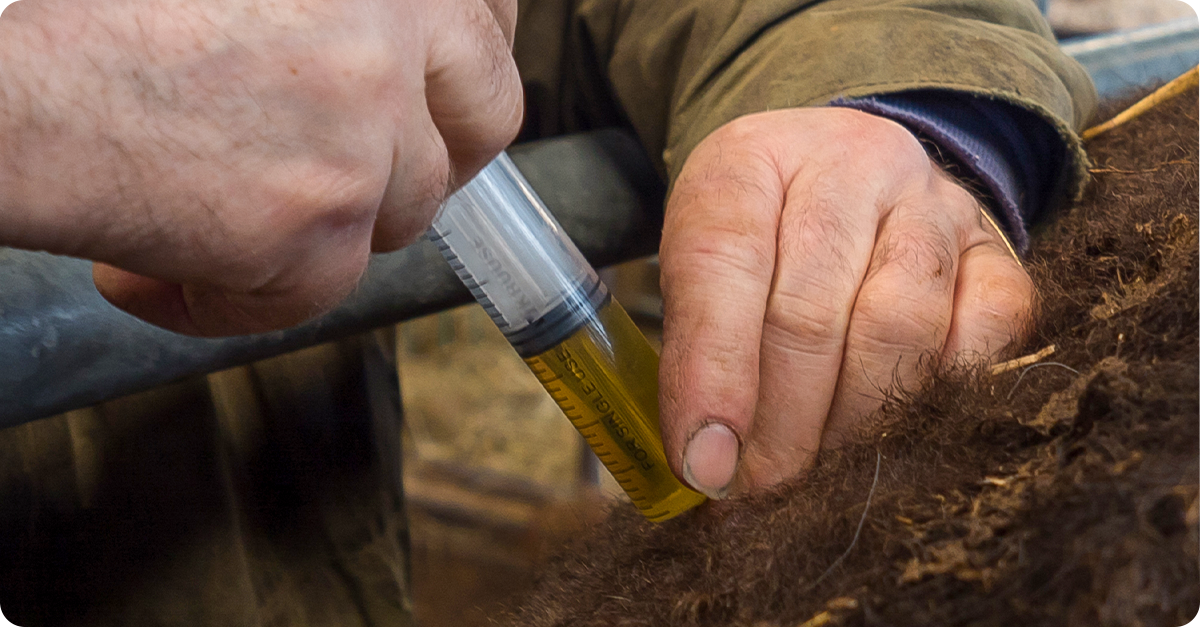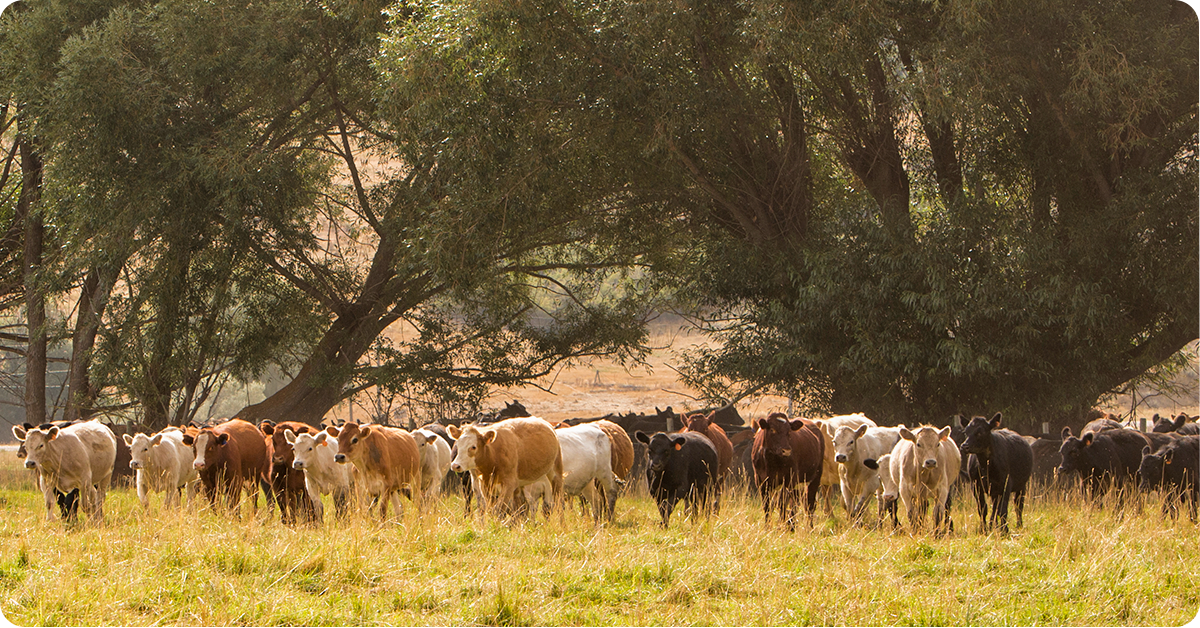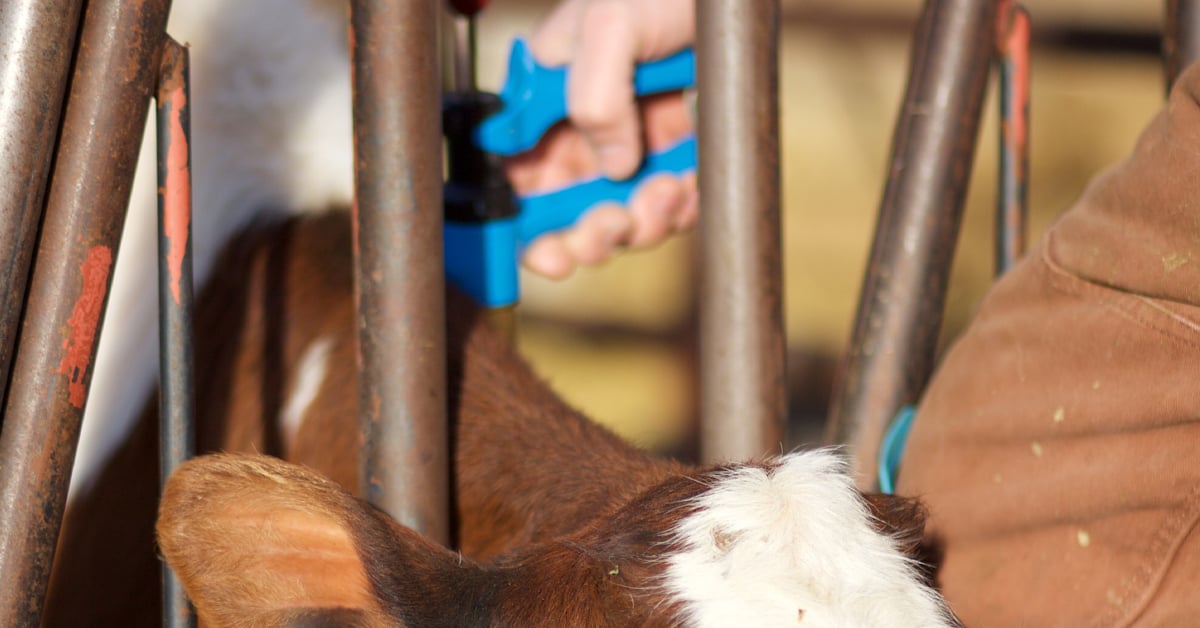
Protecting your livestock from a range of infectious diseases improves herd health and production. Vaccinations help build immunity which prepares your animals to fight off potential threats.
By following a well-planned vaccination schedule, you can significantly reduce the risk of production losses from preventable diseases. This proactive approach to herd health can save you time, money and resources in the long run.
Learn how to optimize livestock health through a well-planned vaccination program.
Key Vaccinations for Livestock
Vaccination programs should be structured around the pathogens most prevalent in the region cattle are kept. Consult your veterinarian to determine which vaccines are necessary for your herd and geographic location. In the intermountain west, vaccinations are typically administered to prevent:
Infectious Bovine Rhinotracheitis (IBR)
IBR is a highly contagious respiratory disease. The virus responsible for IBR, known as Bovine Herpesvirus 1, can cause a range of symptoms including fever, nasal discharge, coughing and even abortion in pregnant cows. Vaccination, biosecurity practices and proper management techniques are key in managing the spread of IBR within a herd.
Bovine Virus Diarrhea (BVD)
BVD is a viral infection that can lead to symptoms such as diarrhea, fever and respiratory issues in cattle. Persistently Infected (PI) cattle are a particular concern for producers. PI cattle carry the disease but may show no symptoms and can spread the disease through the herd. Vaccination against BVD is an essential component of a comprehensive herd health program, along with biosecurity measures and proper management practices. Cattle should be quarantined and tested for BVD prior to entering a breeding herd. Testing and removal of BVD-PI calves is essential to preventing spread.
Parainfluenza 3 (PI3)
PI3 is another respiratory virus that poses a threat to cattle herds. PI3 symptoms include nasal discharge, coughing and fever in cattle. Implementing a comprehensive herd health program that includes PI3 vaccination, biosecurity protocols and proper management techniques is essential for minimizing the impact of this respiratory virus on cattle populations.
Bovine Respiratory Syncytial Virus (BRSV)
BRSV can cause severe respiratory symptoms in cattle, such as coughing, nasal discharge and fever. Vaccination against BRSV is essential in preventing outbreaks and protecting the well-being of livestock. Cattle producers can effectively manage the risk of this respiratory virus and ensure the health and productivity of their animals
by incorporating BRSV vaccination into a comprehensive herd health program that includes biosecurity measures and proper management techniques.
Campylobacter Fetus
Campylobacter Fetus is a bacterium that can cause reproductive issues in cattle, including infertility, abortion and stillbirths. Implementing vaccinations, biosecurity measures and proper management techniques are key in preventing the spread of Campylobacter Fetus within a herd.
Leptospirosis: 5 Species
Leptospira is a bacteria that encompasses various species, each with unique characteristics and impacts on livestock health. Among the five species, Canicola, Grippotyphosa, Hardjo, Icterohaemorrhagiae and Pomona, each poses a distinct threat to cattle herds:
Canicola: leads to kidney and liver issues in cattle
Grippotyphosa: causes fever and reproductive problems
Hardjo: impacts cattle fertility
Icterohaemorrhagiae: results in severe bleeding
Pomona: leads to kidney failure
Vaccination against these Leptospira species, along with implementing biosecurity measures and proper management techniques, is essential in safeguarding the health and productivity of cattle herds.
Bovine Rotavirus
Bovine Rotavirus can lead to diarrhea, dehydration and decreased milk production in infected animals. Vaccination against Bovine Rotavirus, along with other preventive measures like biosecurity protocols and proper management techniques, is crucial in preventing outbreaks and protecting the well-being of livestock.
Bovine Coronavirus
Bovine Coronavirus can lead to diarrhea, respiratory issues and decreased milk production. Vaccination, biosecurity protocols and proper management techniques are crucial in preventing outbreaks and protecting the well-being of livestock.
Clostridial Diseases
The organisms responsible for clostridial diseases are found in the soil, where they can survive for a very long time. Clostridial organisms also live naturally in the bodies of animals and do not present problems until a weakness or change in the immune system causes them to sky rocket. There are many types of Clostridial Diseases that can affect cattle, including enterotoxemia types C & D, tetanus, black leg, black disease, botulism, malignant edema and bacillary hemoglobinuria.
Enterotoxemia Type C (Bloody Scours): causes severe gastrointestinal issues, leading to symptoms such as diarrhea, abdominal pain and even sudden death in some cases.
Enterotoxemia Type D (Overeating/Pulpy Kidney Disease): Common in baby calves, especially when bottle fed, a change in diet causes clostridial organisms to skyrocket at a rate that cannot be stopped causing the animal to bloat and die.
Tetanus (Lockjaw): affected animals may have a stiff gait, closed or stiff jaw and will usually go down with all four legs held out straight and stiff–Tetanus is a danger when animals are exposed to rusted metal.
Black Leg: animals may show signs of lameness, fever and lethargy–blackleg primarily affects pastured cattle.
Black Disease: affected animals become reluctant to move, lose their appetite and usually die within 48 hours.
Botulism: causes weakness, muscle incoordination, depression, and paralysis, followed by death.
Malignant Edema (Gas-gangrene): usually develops from a wound infection causing swelling around the infection site, high fever, lethargy and death.
Bacillary Hemoglobinuria (Red Water Disease): may cause depression, fever and labored breathing with blood coming from the nostrils.
Clostridial vaccines also protect against these diseases. Vaccines along with a comprehensive herd health program, is essential in ensuring the well-being of your herd.
Haemophilus Somnus
Haemophilus somnus, also known as Histophilus somni, is another common bacterial pathogen that can affect cattle. This bacterium can cause a range of diseases in cattle, including respiratory infections, septicemia, meningitis and reproductive issues. Haemophilus in cattle leads to symptoms such as fever, depression, nasal discharge and even sudden death in severe cases. Prevention strategies such as proper vaccination, good management practices, and regular health monitoring can help reduce the risk of Haemophilus infections in cattle herds.
K99 Piliated Escherichia Coli
K99 Piliated Escherichia Coli is another bacterium that causes symptoms such as diarrhea, dehydration and severe illness in infected animals. Vaccination along with biosecurity measures and proper management techniques, is crucial in preventing outbreaks and protecting the well-being of livestock.
Brucellosis (Bangs) Vaccines
Brucellosis also known as “Bangs” is a bacterial disease that can cause abortions and infertility in cattle. Brucellosis can be transferred among livestock, but is also transferable from wild game such as buffalo and deer. Vaccinations must be administered by a veterinarian and are essential to protecting livestock. Implementing biosecurity measures such as testing and culling infected animals along with proper management techniques is crucial in preventing the spread of Brucellosis within a herd.
Moraxella Bovis (Pinkeye)
In areas where flies are a problem, pinkeye vaccination is recommended. Pink eye is a contagious disease that leads to symptoms of eye discharge, redness and swelling. Vaccination against Moraxella Bovis, along with proper hygiene practices and management techniques, is crucial in controlling the spread of infections within a herd.
Trichomoniasis (Trich)
Trichomoniasis is a venereal disease affecting cattle. This parasitic infection can cause infertility and reproductive issues in both male and female animals. Infected bulls can pass on the disease to cows during mating, leading to failed pregnancies and reduced herd productivity. Testing for Trich by a veterinarian and culling infected animals are crucial to controlling spread within herds. Vaccines are available to help prevent this disease.
Mannheimia Haemolytica & Pasturella Multocida (Shipping Fever)
Mannheimia Haemolytica and Pasteurella Multocida are two common bacterial pathogens that contribute to respiratory diseases in cattle. These bacteria cause pneumonia, leading to reduced growth rates and are the number one and number two killer of cattle in feedlots. Preventative measures such as proper vaccination, good management practices and adequate ventilation in barns can help reduce the risk of infection. Feedlots often require pre-vaccination (backgrounding) for these diseases prior to shipping.
Fusobacterium (Footrot)
Fusobacterium necrophorum, commonly known as the bacteria responsible for footrot, is another threat to livestock health. This infection primarily affects the hooves of sheep and cattle, causing severe lameness and discomfort. Footrot can lead to reduced mobility, weight loss and decreased productivity in affected livestock. Prevention strategies such as maintaining clean and dry living conditions and regular hoof trimming can help reduce the risk of infection. Vaccines are available to help in protecting livestock against infection. Early detection and treatment of footrot are essential to prevent the spread of the bacteria within herds.
Timing is Everything: When to Administer Vaccines
Administering vaccines at the right time is crucial to ensuring their effectiveness. The timing may vary depending on the specific vaccine and the age of the cattle. Some general guidelines for vaccine administration include:
Calves
Begin vaccinations as early as possible to provide protection during vulnerable early months. This may include vaccines for diseases like clostridial infections, BVD and IBR.
Pregnant Cows
Vaccinate pregnant cows prior to calving to pass on immunity to their calves through colostrum.
Annual Boosters
Many vaccines require annual boosters to maintain immunity levels. Work with your veterinarian to determine the appropriate timing for booster shots.
Remember to follow the manufacturer's instructions as labeled. Also consult your veterinarian for precise vaccination timing and help with creating a customized schedule based on your herd's specific needs.
Tips for Maintaining a Vaccination Schedule
Staying on top of your livestock vaccination schedule is essential for optimal health management. Here are some tips to help you maintain a consistent schedule:
Keep Detailed Records
Maintain accurate records of each animal's vaccination history, including the vaccine administered, date and any adverse reactions.
Create a Reminder System
Set up reminders, whether through a digital calendar, smartphone app or physical calendar, to ensure you never miss a vaccination date.
Work with Your Veterinarian
Collaborate closely with your veterinarian to develop a vaccination schedule that aligns with your herd's specific needs. An animal health professional can provide valuable insights and guidance to optimize your livestock's health.
Consider Herd Health Management
In addition to your vaccination schedule, implement good herd health practices such as proper nutrition, regular deworming and biosecurity measures to maximize the overall well-being of livestock.
Monitoring and Adjusting for Optimal Health
Regular monitoring is essential to ensure the optimal health of your livestock. Keep a close eye on your cattle for any signs of illness or changes in behavior. Early detection can help prevent the spread of diseases and allow for timely intervention.
Periodically review and assess your vaccination schedule with your veterinarian. They can help you determine if any adjustments are necessary based on changes in disease prevalence or emerging health concerns in your area.
Maintaining open communication with your veterinarian and staying informed about current livestock health practices will enable you to optimize the vaccination schedule and overall health management of your cattle.
Protecting Intermountain Cattle
Vaccinations are part of a comprehensive herd health program that maximizes growth and reproduction. By following these tips, you can establish and maintain a well-organized vaccination schedule, ensuring the continued health and productivity of your cattle.
IFA is your trusted intermountain source for livestock vaccines. Ask an IFA animal health expert for help developing an effective livestock vaccination program and always consult your veterinarian for vaccination recommendations based on local disease prevalence and risk factors.


